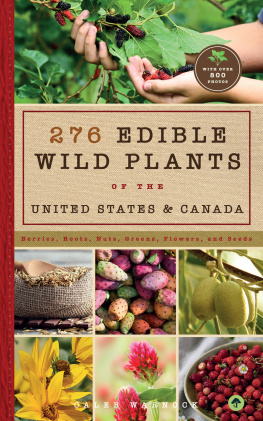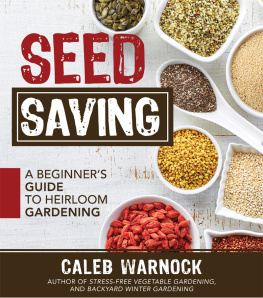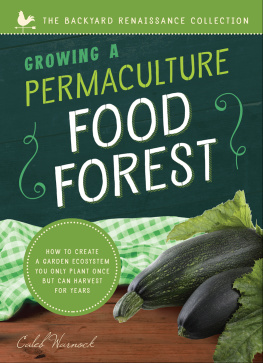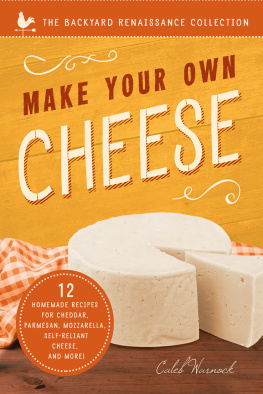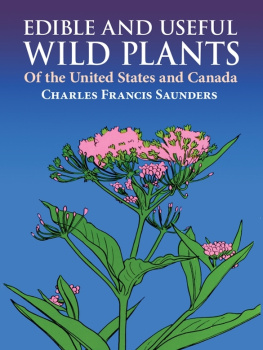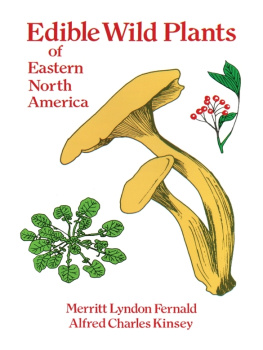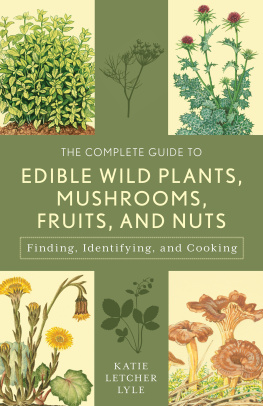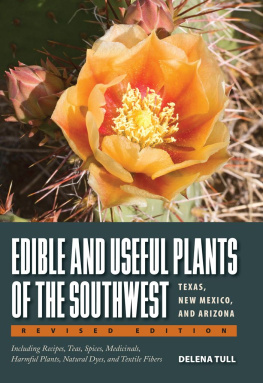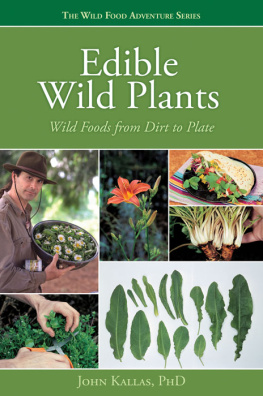
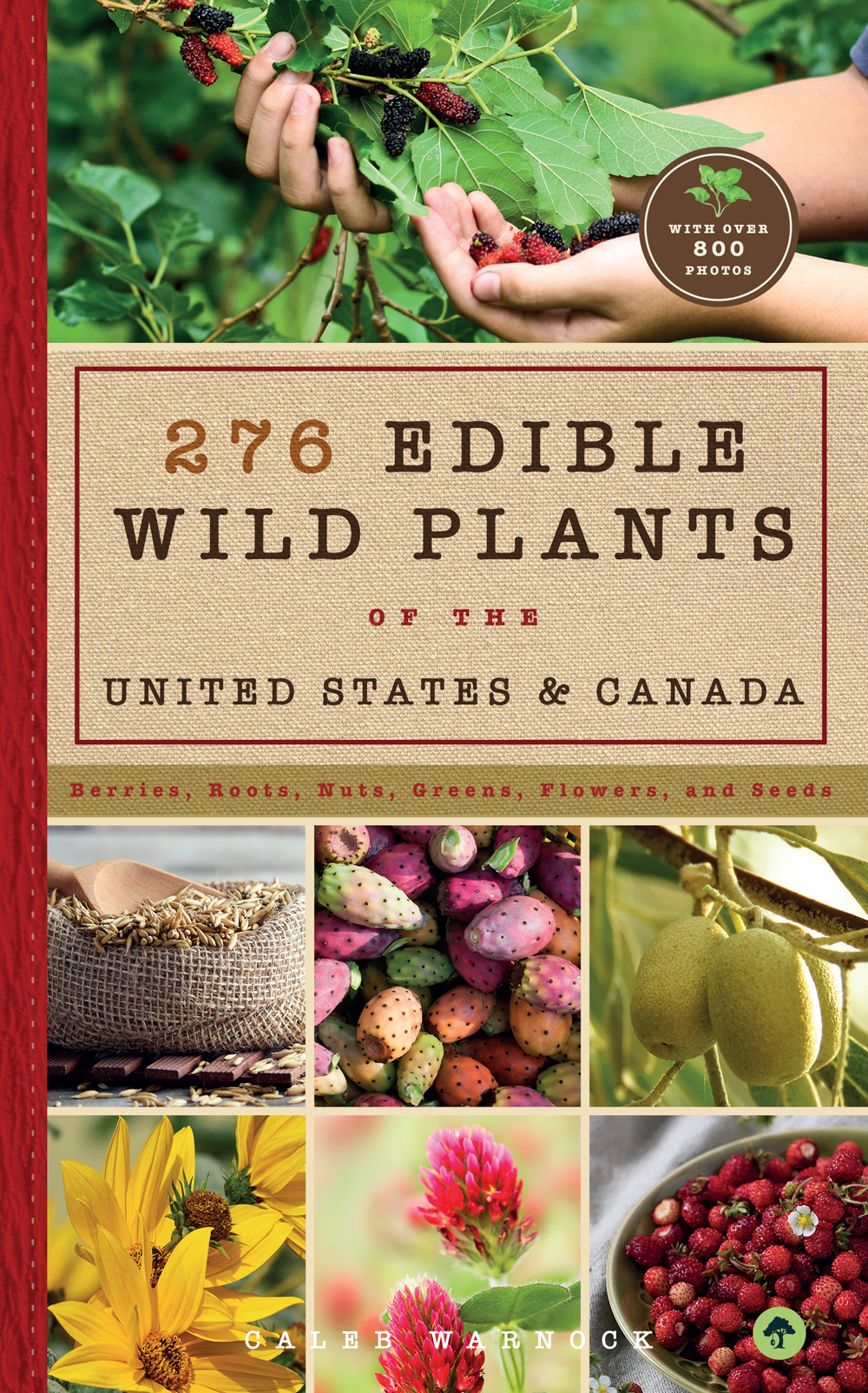


Copyright 2020 by Caleb Warnock
All rights reserved.
Published by Familius LLC, www.familius.com
PO Box 1249 Reedley 93654
Familius books are available at special discounts for bulk purchases, whether for sales promotions or for family or corporate use. For more information, email . Reproduction of this book in any manner, in whole or in part, without written permission of the publisher is prohibited.
Inherent dangers exist when ingesting wild plants. The material in this book is presented for general information purposes only. The publisher and author accept no liability of any kind. Any application of the information in this book is at the sole discretion and responsibility of the user.
Special thanks to the Washington Department of Ecology for the use of their image of Typha glauca.
Library of Congress Control Number: 2019953190
Print ISBN 9781641702423
Ebook ISBN 9781641702829
Printed in China
Edited by Peg Sandkam and Kaylee Mason
Cover design by Carlos Guerrero
Book design by Emma Hiatt
10 9 8 7 6 5 4 3 2 1
First Edition

CALEB WARNOCK


CONTENTS
Welcome to the World of Wild Foods .............................................................1
PART ONE : THE PLANTS
Abutilon theophrasti (velvetleaf)
Acer negundo (box elder maple)
Achillea millefolium (Western yarrow)
Aegilops cylindrica (jointed goatgrass)
Agastache foeniculum (blue giant hyssop)
Amaranthus Species
Amaranthus albus (tumble pigweed)
Amaranthus blitoides (mat amaranth, prostrate pigweed)
Amaranthus hybridus (slim amaranth)
Amaranthus powellii (Powells amaranth)
Amaranthus retrofl exus (redroot pigweed, redroot amaranth)
Amaranthus tuberculatus (roughfruit amaranth)
Amelanchier alnifolia (Saskatoon serviceberry)
Arctium minus (lesser burdock)
Argentina anserina (silverweed cinquefoil)
Artemisia frigida (fringed sagebrush)
Asclepias Species
Asclepias incarnata (swamp milkweed)
Asclepias syriaca (common milkweed)
Asclepias verticillata (whorled milkweed)
Asclepias viridifl ora (green comet milkweed)
Avena Species
Avena fatua (wild oat)
Avena sativa (common oat)
Barbarea Species
Barbarea vulgaris (garden yellowrocket)
Barbarea orthoceras (American yellowrocket)
Brassica Species
Brassica juncea (brown mustard)
Brassica napus (grape mustard)
Brassica nigra (black mustard)
Brassica rapa (field mustard)
Bromus Species
Bromus japonicus (Japanese brome, field brome)
Bromus secalinus (cheat, rye brome)
Bromus tectorum (downy brome, cheat grass)
Calypso bulbosa (fairy slipper)
Calystegia sepium (hedge bindweed)
Camelina Species
Camelina microcarpa (lesser gold of pleasure)
Camelina sativa (gold of pleasure)
Campanula rapunculoides (creeping bellflower)
Capsella bursa-pastoris (shepherds purse)
Cardamine pensylvanica (Pennsylvania bittercress)
Cardaria draba (whitetop, hoary cress)
Carduus nutans (musk thistle)
Carum carvi (common caraway)
Celtis occidentalis (hackberries)
Cenchrus longispinus (longspine sandbur)

Centaurea cyanus (garden cornflower)
Chamerion Species
Chamerion angustifolium (fireweed)
Chamerion latifolium (dwarf fireweed)
Chenopodium Species
Chenopodium album (lambs-quarters, wild spinach)
Chenopodium berlandieri (goosefoot, netseed lambs-quarters)
Chenopodium murale (nettleleaf goosefoot)
Chorispora tenella (blue mustard)
Cichorium intybus (chicory)
Cirsium Species
Cirsium arvense (Canada thistle)
Cirsium vulgare (common thistle, bull thistle)
Cleome serrulata (Rocky Mountain bee plant)
Convolvulus arvensis (field bindweed)
Conyza canadensis (horseweed)
Cornus Species
Cornus canadensis (creeping dogwood)
Cornus sericea (Western dogwood)
Corylus cornuta (beaked hazelnut)
Crataegus Species
Crataegus chrysocarpa (red haw tree)
Crataegus succulenta (fleshy hawthorn)
Crepis Species
Crepis capillaris (smooth hawksbeard)
Crepis nana (dwarf alpine hawksbeard)
Cycloloma atriplicifolium (winged pigweed)
Cynoglossum officinale (houndstongue, gypsyflower)
Cypernus Species
Cyperus erythrorhizos (redroot flatsedge)
Cyperus esculentus (yellow nutsedge)
Cyperus odoratus (fragrant flatsedge)
Cyperus schweinitzii (Schweinitzs flatsedge)
Cyperus squarrosus (bearded flatsedge)
Daucus carota (wild carrot)
Descurainia Species
Descurainia pinnata (Western tansy mustard)
Descurainia sophia (flixweed, herb sophia)
Digitaria sanguinalis (hairy crabgrass)
Elaeagnus Species
Elaeagnus angustifolia (Russian olive)
Elaeagnus commutata (silverberry)
Eleusine indica (goosegrass)
Elymus repens (harsh Indian paintbrush)
Equisetum Species
Equisetum arvense (horsetail grass)
Equisetum laevigatum (smooth horsetail)
Equisetum hyemale (scouringrush horsetail)
Equisetum pratense (meadow horsetail)
Equisetum scirpoides (dwarf scouringrush)
Equisetum variegatum (variegated scouringrush)
Erodium cicutarium (redstem filaree, storks bill)
Fragaria Species
Fragaria vesca (woodland, alpine, or wild strawberry)
Fragaria virginiana (Virginia strawberry)
Galium aparine (cleavers, goosegrass)
Gaultheria hispidula (creeping snowberry)
Geranium bicknellii (Bicknells cranesbill)

Helianthus Species
Helianthus annuus (common sunflower)
Helianthus maximiliani (Maximilian sunflower)
Helianthus pauciflorus (stiff sunflower)
Helianthus petiolaris
Next page
